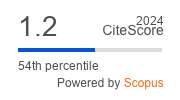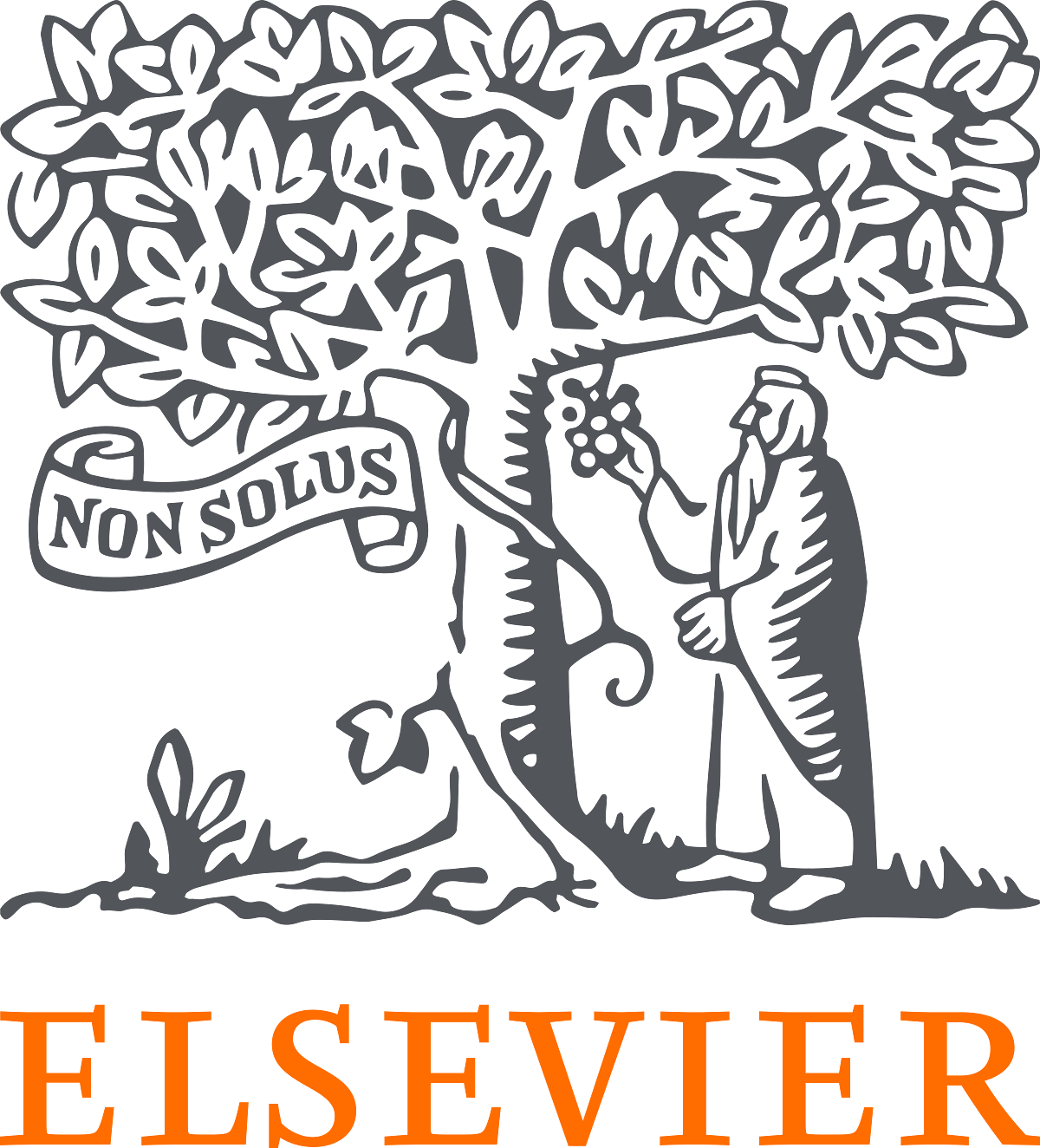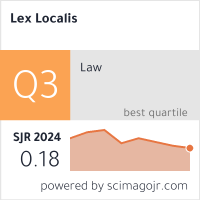Adaptive Management in Urban Stream Governance: A Review and an Urban Commoning Scenario-Building Exercise
DOI:
https://doi.org/10.4335/19.3.659-688(2021)Keywords:
adaptive management, water ecosystem, river restoration, urban communing, Social-Ecological SystemAbstract
One environmental solution proposed by scholars since the 1980s is to manage our common natural resources adaptively with emphasis on feedback, the inclusion of multiple stakeholders and the flexibility to change accordingly. By focusing the analysis on the understudied topic of urban river systems in adaptive governance, a systematic literature review and a scenario-building exercise were conducted. Whereas the bibliometric analysis aims to improve our collective knowledge on many aspects of the adaptive management in urban stream governance, the urban commoning scenario-building exercise is to simulate alternatives beyond conventional top-down management approaches and to explore different opportunities of engaging multiple stakeholders throughout the adaptive management cycle. Our investigations recommend that although there is a trend of considering the “human” or “soft” perspective as part of the integrated solution approach, future researches need to ground their studies in more empirical cases in order to identify a few contextual variables such as ICT or public-private collaboration arrangement to leverage the complex inputs of soft power as benefits and added value in the management of urban river as a social-ecological system.
References
Allen, C. R., Fontaine, J. J., Pope, K. L. & Garmestani, A. S. (2011) Adaptive Management for a Turbulent Future, Journal of Environmental Management, 92(5), pp. 1339–1345, https://doi.org/10.1016/j.jenvman.2010.11.019.
Alley, R. B., Marotzke, J., Nordhaus, W. D., Overpeck, J. T., Peteet, D. M., Pietke, R. A. & Wallace, J. M. (2003) Abrupt Climate Change, Science, 299(5615), pp. 2005-2010, https://doi.org/10.1126/science.1081056.
Andre, M. S. (2015) Arcata Community Forest, California, United States of America, In: Siry, P. J., Merry, K., Boston, K., Bettinger, P., Grebner, D. L. & Cieszewski, C. (eds.) Forest Plans of North America (Elsevier Inc.), pp. 53–59, https://doi.org/10.1016/B978-0-12-799936-4.00008-4.
Astaraie-Imani, M., Kapelan, Z., Fu, G., & Butler, D. (2012) Assessing the Combined Effects of Urbanisation and Climate Change on the River Water Quality in an Integrated Urban Wastewater System in the UK, Journal of Environmental Management, 112, pp. 1–9, https://doi.org/10.1016/j.jenvman.2012.06.039.
Bain, D. J., Copeland, E. M., Divers, M. T., Hecht, M., Hopkins, K. G., Hynicka, J., Koryak, M., Kostalos, M., Brown, L., Elliot, E. M., Fedor, J., Gregorich, M., Porter, B., Smith, B., Tracey, C. & Zak, M. (2014) Characterizing a Major Urban Stream Restoration Project: Nine Mile Run, Journal of the American Water Resources Association, 50(6), pp.1608–1621, https://doi.org/10.1111/jawr.12225.
Bhaskar, A. S., Beesley, L., Burns, M. J., Fletcher, T. D., Hamel, P., Oldham, C. E. & Roy, A. H. (2016) Will It Rise or Will It Fall? Managing the Complex Effects of Urbanization on Base Flow, Freshwater Science, 35, pp. 293–310, https://doi.org/10.1086/685084.
Bingham-Hall, J. (2016) Future of Cities: Commoning and Collective Approaches to Urban Space (London: Future of Cities, Government Office for Science).
Bollier, D. & Helfrich, S. (eds.) (2014) The Wealth of the Commons: A World Beyond Market and State (Amherst, MA: Levellers Press).
Bollier, D. & Helfrich, S. (eds.) (2015) Patterns of Commoning (Amherst, MA: Commons Strategy Group and Off the Common Press).
Bresnihan, P. & Byrne, M. (2015) Escape into the City: Everyday Practices of Commoning and the Production of Urban Space in Dublin, Antipode, 47(1), pp. 36–54, https://doi.org/10.1111/anti.12105.
Brierley, G., Fryirs, K., Cook, N., Outhet, D., Raine, A., Parsons, L. & Healey, M. (2011) Geomorphology in Action: Linking Policy with on-the-Ground Actions through Applications of the River Styles Framework, Applied Geography, 31(3), pp. 1132–1143, https://doi.org/10.1016/j.apgeog.2011.03.002.
Brierley, G., Reid, H., Fryirs, K. & Trahan, N. (2010) What Are We Monitoring and Why? Using Geomorphic Principles to Frame Eco-Hydrological Assessments of River Condition, Science of the Total Environment, 408(9), pp. 2025–2033, https://doi.org/10.1016/j.scitotenv.2010.01.038.
Brookes, A., Chalmers, A. & Vivash, R. (2005) Solving an Urban River Erosion Problem on the Tilmore Brook, Hampshire (UK), Water and Environment Journal, 19(3), pp. 199–206, https://doi.org/10.1111/j.1747-6593.2005.tb01587.x.
Brown, H. L., Bos, D. G., Walsh, C. J., Fletcher, T. D. & RossRakesh, S. (2016) More Than Money: How Multiple Factors Influence Householder Participation in at-Source Stormwater Management, Journal of Environmental Planning and Management, 59(1), pp. 79–97, https://doi.org/10.1080/09640568.2014.984017.
Brunner, R. D., Colburn, C. H., Cromley, C. M., Klein, R. A. & Olson, E. A. (2002) Finding Common Ground Governance and Natural Resources in the American West (Haven, Connecticut: Yale University Press).
Buchanan, B. P., Walter, M. T., Nagle, G. N. & Schneider, R. L. (2012) Monitoring and Assessment of a River Restoration Project in Central New York, River Research and Applications, 28(2), pp. 216–233, https://doi.org/10.1002/rra.1453.
Bunch, M. J. (2001) An Adaptive Ecosystem Approach to Rehabilitation and Management of the Cooum River Environmental System in Chennai, India, UWSpace, available at: http://hdl.handle.net/10012/597 (December 20, 2021).
Bunch, M. J. (2003) Soft Systems Methodology and the Ecosystem Approach: A System Study of the Cooum River and Environs in Chennai, India, Environmental Management, 31(2), pp. 0182-0197, https://doi.org/10.1007/s00267-002-2721-8.
Burley, J., Deyoung, G., Partin, S. & Rokos, J. (2011) Reinventing Detroit: Reclaiming Grayfields- New Metrics in Evaluating Urban Environments, Challenges, 2, pp. 45-54, https://doi.org/10.3390/challe2040045.
Chaffin, B. C., Gosnell, H. & Cosens, B. A. (2014) A Decade of Adaptive Governance Scholarship: Synthesis and Future Directions, Ecology and Society, 19(3), p. 56, https://doi.org/10.5751/ES-06824-190356.
Chatterton, P. (2013) Towards an Agenda for Post-carbon Cities: Lessons from Lilac, the UK’s First Ecological, Affordable Cohousing Community, International Journal of Urban and Regional Research, 37(5), pp. 1654–1674, https://doi.org/10.1111/1468-2427.12009.
Che, Y., Yang, K., Chen, T. & Xu, Q. (2012) Assessing a Riverfront Rehabilitation Project Using the Comprehensive Index of Public Accessibility, Ecological Engineering, 40, pp. 80–87, https://doi.org/10.1016/j.ecoleng.2011.12.008.
Cloak, D., Gervin, L. & Goldie, B. (2006) From Vision to Policy: A Plan to Get Savvy about Urban Watersheds. Report, University of California Water Resources Center, 107, pp. 129–142.
Committee on Abrupt Climate Change, N. R. C. (2002) Abrupt Climate Change: Inevitable Surprises (Washington, DC: National Academies Press).
Cox, M., Arnold, G. & Villamayor Tomas, S. (2010) A Review of Design Principles for Community-based Natural Resource Management, Ecology and Society, 15(4), pp. 38 (online), https://doi.org./10.5751/ES-03704-150438.
Cuffney, T. F., Kennen, J. G. & Waite, I. R. (2014) Aquatic Ecosystems as Indicators of Status and Trends in Water Quality, Comprehensive Water Quality and Purification, 1, pp. 122–156, https://doi.org/10.1016/B978-0-12-382182-9.00008-6.
da Cruz e Sousa, R. & Ríos-Touma, B. (2018) Stream Restoration in Andean Cities: Learning from Contrasting Restoration Approaches, Urban Ecosystems, 21(2), pp. 281–290, https://doi.org/10.1007/s11252-017-0714-x.
Davis, J., O’Grady, A. P., Dale, A., Arthington, A. H., Gell, P. A., Driver, P. D., Bond, N., Casanova, M., Finlayson, M., Watts, R. J., Capon, S. J., Nagelkerken, I., Tingley, R., Frz, B., Page, T. J. & Specht, A. (2015) When Trends Intersect: The Challenge of Protecting Freshwater Ecosystems under Multiple Land Use and Hydrological Intensification Scenarios, Science of the Total Environment, 534, pp. 65–78, https://doi.org/10.1016/j.scitotenv.2015.03.127.
Dewitt, J. (1994) Civic Environmentalism: Alternatives to Regulation in States and Communities (Washington, DC: CQ Press).
Downs, P. W. & Kondolf, G. M. (2002) Post-Project Appraisals in Adaptive Management of River Channel Restoration, Environmental Management, 29(4), pp. 477-496, https://doi.org/10.1007/s00267-001-0035-X.
Dietz, T., Ostrom, E. & Stern, P. C. (2003) The Struggle to Govern the Commons. Science, 302 (5652), pp. 1907-1912, https://doi.org/10.1126/science.1091015.
Eden, S., & Tunstall, S. (2006) Ecological versus Social Restoration? How Urban River Restoration Challenges but Also Fails to Challenge the Science – Policy Nexus in the United Kingdom, Environment and Planning C: Government and Policy, 24(5), pp. 661–680, https://doi.org/10.1068/c0608j.
Farag, A. M., Larson, D. L., Stauber, J., Stahl, R., Isanhart, J., McAbee, K. & Walsh, C. J. (2017) Restoration of Contaminated Ecosystems: Adaptive Management in a Changing Climate, Restoration Ecology, 25(6), pp. 884-893, https://doi.org/10.1111/rec.12583.
Felstead, A., Thwaites, K. & Simpson, J. (2019) A Conceptual Framework for Urban Commoning in Shared Residential Landscapes in the UK, Sustainability (Switzerland), 11(21), p. 6119, https://doi.org/10.3390/su11216119.
Foster, S. & Iaione, C. (2016) The City as a Commons, Yale Law and Policy Review, 34(281), pp. 281-349, http://dx.doi.org/10.2139/ssrn.2653084.
Giannakis, E., Bruggeman, A., Poulou, D., Zoumides, C. & Eliades, M. (2016) Linear Parks along Urban Rivers: Perceptions of Thermal Comfort and Climate Change Adaptation in Cyprus. Sustainability (Switzerland), 8(10), 1023, https://doi.org/10.3390/su8101023.
Harvey, D. (2012) Rebel Cities: From the Right to the City to the Urban Revolution (London: Verso).
Hess, C. (2008) Mapping the New Commons, In: The Twelfth Biennial Conference of the International Association for the Study of the Commons (Cheltenham, UK).
Ho, K. C., Baber, Z. & Khondker, H. (2002) “Sites” of resistance: alternative websites and state-society relations, British Journal of Sociology, 53(1), pp. 127–148, https://doi.org/10.1080/00071310120109366.
Holling, C. S. (1978) Adaptive Environmental Assessment and Management (Hoboken, New Jersey: John Wiley & Sons, Ltd.).
Hubbart, J. A., Kellner, E. & Zeiger, S. J. (2019) A Case-Study Application of the Experimental Watershed Study Design to Advance Adaptive Management of Contemporary Watersheds, Water, 11(2355), pp. 1–16, https://doi.org/10.3390/w11112355.
Hughes, R. M. & Yeakley, J. A. (2014) Major Research and Monitoring Needs for Urban Streams and Watersheds, In: Zeakley, J. A., Maas-Hebner, K. G. & Hughes, R. M. (eds.) Wild Salmonids in the Urbanizing Pacific Northwest (New York: Springer).
Hychka, K. & Druschke, C. G. (2017) Adaptive Management of Urban Ecosystem Restoration: Learning from Restoration Managers in Rhode Island, USA, Society and Natural Resources, 30(11), pp. 1358–1373, https://doi.org/10.1080/08941920.2017.1315653.
Iaione, C. (2016) The Co-City: Sharing, Collaborating, Cooperating, and Commoning in the City, American Journal of Economics and Society, 75(2), pp. 415-455, https://doi.org/10.1111/ajes.12145.
Jackson, C. R. & Pringle, C. M. (2010) Ecological Benefits of Reduced Hydrologic Connectivity in Intensively Developed Landscapes, BioScience, 60(1), pp. 37–47, http://dx.doi.org/10.1525/bio.2010.60.1.8.
Jarvis, H., Scanlon, K., Fernández Arrigoitia, M., Chatterton, P., Kear, A., O’Reilly, D., Sargisson, L & Stevenson, F. (2016) Cohousing: Shared Futures, Economic & Social Research Council (Callaghan: University of Newcastle).
Johnson, P. A., Tereska, R. L. & Brown, E. R. (2002) Using Technical Adaptive Management to Improve Design Guidelines for Urban Instream Structures, Journal of the American Water Resources Association, 38, pp. 1143–1152, https://doi.org/10.1111/j.1752-1688.2002.tb05552.x.
Maimone, M., Marengo, B. & Byun, S. A. (2005) Tookany/Tacony – Frankford Watershed Plan: Restoring an Urban stream, Managing Watersheds for Human and Natural Impacts, pp. 1–12, https://doi.org/10.1061/40763(178)139.
Maron, M., Hobbs, R. J., Moilanen, A., Matthews, J. W., Christie, K., Gardner, T. A., Keith, D. A., Lindenmayer, D. B. & McAlpine, C. A. (2012) Faustian Bargains? Restoration Realities in the Context of Biodiversity Offset Policies, Biological Conservation, 155, pp. 141–148, https://doi.org/10.1016/j.biocon.2012.06.003.
Martínez-Paz, J., Pellicer-Martínez, F. & Colino, J. (2014) A probabilistic approach for the socioeconomic assessment of urban river rehabilitation projects, Land Use Policy, 36, 468–477. https://doi.org/10.1016/j.landusepol.2013.09.023.
McLain, R. J. & Lee, R. G. (1996) Adaptive Management: Promises and Pitfalls, Environmental Management, 20(4), pp. 437–448, https://doi.org/10.1007/BF01474647.
Moriarty, P., Shraideh, F., Haddad, F., Alzoubi, R., Abbadi, M., Batchelor, C. H. & De Grooijer, G. (2005) Scenario building in local-level water resource management – experience from the EMPOWERS project with reference to a case study in Jordan. Proceedings of the EMPOWERS Regional Symposium: End-Users Ownership and Involvement in IWRM, 13-17. November 2005. Cairo.
Naito, W., Kamo, M., Tsushima, K., & Iwasaki, Y. (2010) Exposure and Risk Assessment of Zinc in Japanese Surface Waters, Science of the Total Environment, 480(20), pp. 4271-4284, https://doi.org/10.1016/j.scitotenv.2010.06.018.
Newman, A. (2013) Gatekeepers of the Urban Commons? Vigilant Citizenship and Neoliberal Space in Multiethnic Paris, Antipode, 45(4), pp. 947–964, https://doi.org/10.1111/j.1467-8330.2012.01052.x.
Olsson, P., Folke, C. & Berkes, F. (2004). Adaptive Comanagement for Building Resilience in Social–Ecological Systems, Environmental Management, 34(1), pp. 75–90, https://doi.org/10.1007/S00267-003-0101-7.
Olsson, P., Folke, C., Galaz, V., Hahn, T. & Schultz, L. (2007) Enhancing the Fit through Adaptive Co-management: Creating and Maintaining Bridging Functions for Matching Scales in the Kristianstads Vattenrike Biosphere Reserve Sweden, Ecology and Society, 12(1), p. 28, available at: http://urn.kb.se/resolve?urn=urn:nbn:se:su:diva-21181 (November 12, 2020).
Pahl-Wostl, C. (2007) Transitions towards Adaptive Management of Water Facing Climate and Global Change, Water Resources Management, 21, pp. 49–62, https://doi.org/10.1007/s11269-006-9040-4.
Petrescu, D. (2017) Diverse Economies, Ecologies an Practices of Urban Commoning, In: Frichot, H., Gabrielsson, C. & Runting, H. (eds.) Architecture and Feminisms: Ecologies, Economies, Technologies, London: Routledge.
Prokopy, L. S., Mullendore, N., Brasier, K. & Floress, K. (2014) A Typology of Catalyst Events for Collaborative Watershed Management in the United States, Society and Natural Resources, 27(11), pp. 1177–1191, https://doi.org/10.1080/08941920.2014.918230.
Richter, B. D., Warner, A. T., Meyer, J. L. & Lutz, K. (2006) A Collaborative and Adaptive Process for Developing Environmental Flow Recommendations, River Research and Applications, 22(3), pp. 297-318, https://doi.org/10.1002/rra.892.
Shoredits, A. S. & Clayton, J. A. (2013) Assessing the Practice and Challenges of Stream Restoration in Urbanized Environments of the USA, Geography Compass, 7(5), pp. 358–372, https://doi.org/10.1111/gec3.12039.
Smith, R. F., Hawley, R. J., Neale, M. W., Vietz, G. J., Diaz-Pascacio, E., Herrmann, J., Lovell, A. C., Prescott, C., Rios-Touma, B., Smith, B. & Utz, R. M. (2016) Urban Stream Renovation: Incorporating Societal Objectives to Achieve Ecological Improvements, Freshwater Science, 35, pp. 364–379, https://doi.org/10.1086/685096.
Snow, D. (2001). Coming home: an introduction to collaborative conservation, In: Brick, P., Snow, D. & Van de Wetering, S. (eds.) Across the great divide: explorations in collaborative conservation and the American west (Washington, DC: Island), pp. 1–12.
Sukhodolova, T., Weber, A., Zhang, J. & Wolter, C. (2017) Effects of Macrophyte Development on the Oxygen Metabolism of an Urban River Rehabilitation Structure, Science of the Total Environment, 574, pp. 1125–1130, https://doi.org/10.1016/j.scitotenv.2016.08.174.
Stavrides, S. (2014) On Urban Commoning: the City Shapes Institutions of Sharing, In: Ferguson, F. & Urban Drift Projects (eds.) Make Shift City: Renegoating the Urban Commons (Berlin: Jovis), pp. 83-85.
Tompkins, E. & Adger, N. (2004) Does Adaptive Management of Natural Resources Enhance Resilience to Climate Change?, Ecology and Society, 9(2), p. 10 (online), https://doi.org/10.5751/ES-00667-090210.
Walsh, C. J., Roy, A. H., Feminella, J. W., Cottingham, P. D., Groffman, P. M. & Morgan, R. P. (2005) The Urban Stream Syndrome: Current Knowledge and the Search for a Cure, Journal of the North American Benthological Society, 24, pp. 706–723, https://doi.org/10.1899/04-028.1.
Walters, C. J. & Hilborn, R. (1978) Ecological Optimization and Adaptive Management, Annual Review of Ecology and Systematics, 9(1), pp. 157–188, https://doi.org/10.1146/annurev.es.09.110178.001105.
Wang, D. C., Shi, Z., Yang, K. & Bai, Y. Q. (2009) Environmental Effects of Riparian Land Use Change of Urban River: A Case Study of Suzhou Creek in Shanghai, Zhongguo Renkou Ziyuan Yu Huan Jing/ China Population Resources and Environment, 19(3), pp. 96–101.
Wang, H.-W., Su, Y. W., & Jan, C.-D. (2012) Post-Project Appraisals in River Restoration-Case Studies of Love River in Kaohsiung and Kao-Shan Creek in Taichung, Journal of Taiwan Agricultural Engineering, 58(2), pp. 39–53.
Walters, C. J. (1986) Adaptive Management of Renewable Resources (New York, New York, USA: MacMillan Publishing Co.).
Wantzen, K. M., Da Cunha, C. N., Junk, W. J., Girard, P., Rossetto, O. C., Penha, J. M., Couto, E. G., Becker, M., Priante, G., Tomas, W. M., Santos, S. A., Marta, J., DOmingos, I., Sonoda, F., Curvo, M. & Callil, C. (2008) Towards a Sustainable Management Concept for Ecosystem Services of the Pantanal Wetland, Ecohydrology and Hydrobiology, 8(2–4), pp. 115–138, https://doi.org/10.2478/v10104-009-0009-9.
Watson, S. B., Miller, C., Arhonditsis, G., Boyer, G. L., Carmichael, W., Charlton, M. N., … Wilhelm, S. W. (2016) The Re-eutrophication of Lake Erie: Harmful Algal Blooms and Hypoxia, Harmful Algae, 56, pp. 44-66, https://doi.org/10.1016/j.hal.2016.04.010.
Wee, B. Van, & Banister, D. (2016) How to Write a Literature Review Paper?, Transport Reviews, 36(2), 278–288. https://doi.org/10.1080/01441647.2015.1065456.
Wenger, S. J., Freeman, M. C., Fowler, L. A., Freeman, B. J. & Peterson, J. T. (2010) Conservation Planning for Imperiled Aquatic Species in an Urbanizing Environment, Landscape and Urban Planning, 97(1), pp. 11–21, https://doi.org/10.1016/j.landurbplan.2010.04.006.
Williams, M. J. (2018) Urban commons are more-than-property, Geographical Research, 56(1), 16–25, https://doi.org/10.1111/1745-5871.12262.
Zhang, Y. & Li, S. (2014) The Impact of Environmental Preferences on Public Supporting for the River Ecosystem Restoration Program in China, Problemy Ekorozwoju – Problems of Sustainable Development, 9(2), pp. 55–64.
Zhang, W., Swaney, D. P., Hong, B., Howarth, R. W. & Li, X. (2017) Influence of rapid rural-urban population migration on riverine nitrogen pollution: perspective from ammonia-nitrogen, Environmental Science and Pollution Research, 24(35), pp. 27201–27214, https://doi.org/10.1007/S11356-017-0322-6.








